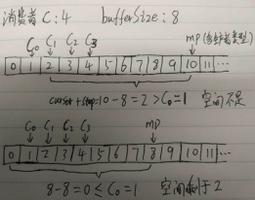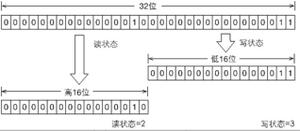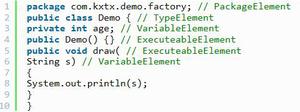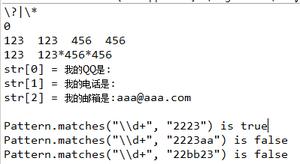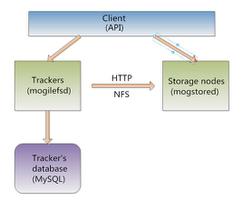CompletableFuture详解

CompletableFuture类实现了CompletionStage和Future接口。Future是Java 5添加的类,用来描述一个异步计算的结果,但是获取一个结果时方法较少,要么通过轮询isDone,确认完成后,调用get()获取值,要么调用get()设置一个超时时间。但是这个get()方法会阻塞住调用线程,这种阻塞的方式显然和我们的异步编程的初衷相违背。
为了解决这个问题,JDK吸收了guava的设计思想,加入了Future的诸多扩展功能形成了CompletableFuture。
CompletionStage是一个接口,从命名上看得知是一个完成的阶段,它里面的方法也标明是在某个运行阶段得到了结果之后要做的事情。
1.进行变换
public<U> CompletionStage<U> thenApply(Function<? super T,? extends U> fn);public <U> CompletionStage<U> thenApplyAsync(Function<? super T,? extends U> fn);
public <U> CompletionStage<U> thenApplyAsync(Function<? super T,? extends U> fn,Executor executor);
首先说明一下已Async结尾的方法都是可以异步执行的,如果指定了线程池,会在指定的线程池中执行,如果没有指定,默认会在ForkJoinPool.commonPool()中执行,下文中将会有好多类似的,都不详细解释了。关键的入参只有一个Function,它是函数式接口,所以使用Lambda表示起来会更加优雅。它的入参是上一个阶段计算后的结果,返回值是经过转化后结果。
例如:
@TestpublicvoidthenApply(){
String result = CompletableFuture.supplyAsync(()->"hello").thenApply(s -> s +" world").join();
System.out.println(result);
}
结果为:
hello world
2.进行消耗
publicCompletionStage<Void>thenAccept(Consumer<?superT> action);publicCompletionStage<Void>thenAcceptAsync(Consumer<?superT> action);
publicCompletionStage<Void>thenAcceptAsync(Consumer<?superT> action,Executor executor);
thenAccept是针对结果进行消耗,因为他的入参是Consumer,有入参无返回值。
例如:
@TestpublicvoidthenAccept(){
CompletableFuture.supplyAsync(()->"hello").thenAccept(s -> System.out.println(s+" world"));
}
结果为:
hello world
3.对上一步的计算结果不关心,执行下一个操作
public CompletionStage<Void>thenRun(Runnable action);public CompletionStage<Void>thenRunAsync(Runnable action);
public CompletionStage<Void>thenRunAsync(Runnable action,Executor executor);
thenRun它的入参是一个Runnable的实例,表示当得到上一步的结果时的操作。
例如:
@TestpublicvoidthenRun(){
CompletableFuture.supplyAsync(()->{
try{
Thread.sleep(2000);
}catch(InterruptedException e){
e.printStackTrace();
}
return"hello";
}).thenRun(()-> System.out.println("hello world"));
while(true){}
}
结果为:
hello world
4.结合两个CompletionStage的结果,进行转化后返回
public<U,V> CompletionStage<V> thenCombine(CompletionStage<? extends U> other,BiFunction<? super T,? super U,? extends V> fn);public <U,V> CompletionStage<V> thenCombineAsync(CompletionStage<? extends U> other,BiFunction<? super T,? super U,? extends V> fn);
public <U,V> CompletionStage<V> thenCombineAsync(CompletionStage<? extends U> other,BiFunction<? super T,? super U,? extends V> fn,Executor executor);
它需要原来的处理返回值,并且other代表的CompletionStage也要返回值之后,利用这两个返回值,进行转换后返回指定类型的值。
例如:
@TestpublicvoidthenCombine(){
String result = CompletableFuture.supplyAsync(()->{
try{
Thread.sleep(2000);
}catch(InterruptedException e){
e.printStackTrace();
}
return"hello";
}).thenCombine(CompletableFuture.supplyAsync(()->{
try{
Thread.sleep(3000);
}catch(InterruptedException e){
e.printStackTrace();
}
return"world";
}),(s1, s2)-> s1 +" "+ s2).join();
System.out.println(result);
}
结果为:
hello world
5. 结合两个CompletionStage的结果,进行消耗
public<U>CompletionStage<Void>thenAcceptBoth(CompletionStage<?extendsU> other,BiConsumer<?superT,?superU> action);public<U>CompletionStage<Void>thenAcceptBothAsync(CompletionStage<?extendsU> other,BiConsumer<?superT,?superU> action);
public<U>CompletionStage<Void>thenAcceptBothAsync(CompletionStage<?extendsU> other,BiConsumer<?superT,?superU> action,Executor executor);
它需要原来的处理返回值,并且other代表的CompletionStage也要返回值之后,利用这两个返回值,进行消耗。
例如:
@Testpublic void thenAcceptBoth(){
CompletableFuture.supplyAsync(()->{
try{
Thread.sleep(2000);
}catch(InterruptedException e){
e.printStackTrace();
}
return"hello";
}).thenAcceptBoth(CompletableFuture.supplyAsync(()->{
try{
Thread.sleep(3000);
}catch(InterruptedException e){
e.printStackTrace();
}
return"world";
}),(s1, s2)-> System.out.println(s1 +" "+ s2));
while(true){}
}
结果为:
hello world
6.在两个CompletionStage都运行完执行
public CompletionStage<Void>runAfterBoth(CompletionStage<?> other,Runnable action);public CompletionStage<Void>runAfterBothAsync(CompletionStage<?> other,Runnable action);
public CompletionStage<Void>runAfterBothAsync(CompletionStage<?> other,Runnable action,Executor executor);
不关心这两个CompletionStage的结果,只关心这两个CompletionStage执行完毕,之后在进行操作(Runnable)。
例如:
@Testpublic void runAfterBoth(){
CompletableFuture.supplyAsync(()->{
try{
Thread.sleep(2000);
}catch(InterruptedException e){
e.printStackTrace();
}
return"s1";
}).runAfterBothAsync(CompletableFuture.supplyAsync(()->{
try{
Thread.sleep(3000);
}catch(InterruptedException e){
e.printStackTrace();
}
return"s2";
}),()-> System.out.println("hello world"));
while(true){}
}
结果为
hello world
7.两个CompletionStage,谁计算的快,我就用那个CompletionStage的结果进行下一步的转化操作
public <U> CompletionStage<U> applyToEither(CompletionStage<?extendsT> other,Function<?superT,U> fn);public <U> CompletionStage<U> applyToEitherAsync(CompletionStage<?extendsT> other,Function<?superT,U> fn);
public <U> CompletionStage<U> applyToEitherAsync(CompletionStage<?extendsT> other,Function<?superT,U> fn,Executor executor);
我们现实开发场景中,总会碰到有两种渠道完成同一个事情,所以就可以调用这个方法,找一个最快的结果进行处理。
例如:
@TestpublicvoidapplyToEither(){
String result = CompletableFuture.supplyAsync(()->{
try{
Thread.sleep(3000);
}catch(InterruptedException e){
e.printStackTrace();
}
return"s1";
}).applyToEither(CompletableFuture.supplyAsync(()->{
try{
Thread.sleep(2000);
}catch(InterruptedException e){
e.printStackTrace();
}
return"hello world";
}), s -> s).join();
System.out.println(result);
}
结果为:
hello world
- 两个CompletionStage,谁计算的快,我就用那个CompletionStage的结果进行下一步的消耗操作。
publicCompletionStage<Void>acceptEither(CompletionStage<?extendsT> other,Consumer<?superT> action);publicCompletionStage<Void>acceptEitherAsync(CompletionStage<?extendsT> other,Consumer<?superT> action);
publicCompletionStage<Void>acceptEitherAsync(CompletionStage<?extendsT> other,Consumer<?superT> action,Executor executor);
例如:
@Testpublic void acceptEither(){
CompletableFuture.supplyAsync(()->{
try{
Thread.sleep(3000);
}catch(InterruptedException e){
e.printStackTrace();
}
return"s1";
}).acceptEither(CompletableFuture.supplyAsync(()->{
try{
Thread.sleep(2000);
}catch(InterruptedException e){
e.printStackTrace();
}
return"hello world";
}), System.out::println);
while(true){}
}
结果为:
hello world
8.两个CompletionStage,任何一个完成了都会执行下一步的操作(Runnable)
public CompletionStage<Void>runAfterEither(CompletionStage<?> other,Runnable action);public CompletionStage<Void>runAfterEitherAsync(CompletionStage<?> other,Runnable action);
public CompletionStage<Void>runAfterEitherAsync(CompletionStage<?> other,Runnable action,Executor executor);
例如:
@Testpublic void runAfterEither(){
CompletableFuture.supplyAsync(()->{
try{
Thread.sleep(3000);
}catch(InterruptedException e){
e.printStackTrace();
}
return"s1";
}).runAfterEither(CompletableFuture.supplyAsync(()->{
try{
Thread.sleep(2000);
}catch(InterruptedException e){
e.printStackTrace();
}
return"s2";
}),()-> System.out.println("hello world"));
while(true){
}
}
结果为:
hello world
9.当运行时出现了异常,可以通过exceptionally进行补偿
public CompletionStage<T>exceptionally(Function<Throwable,?extendsT> fn);
例如:
@Testpublicvoidexceptionally(){
String result = CompletableFuture.supplyAsync(()->{
try{
Thread.sleep(3000);
}catch(InterruptedException e){
e.printStackTrace();
}
if(1==1){
thrownewRuntimeException("测试一下异常情况");
}
return"s1";
}).exceptionally(e ->{
System.out.println(e.getMessage());
return"hello world";
}).join();
System.out.println(result);
}
结果为:
java.lang.RuntimeException: 测试一下异常情况hello world
10.当运行完成时,对结果的记录
这里的完成时有两种情况,一种是正常执行,返回值。另外一种是遇到异常抛出造成程序的中断。这里为什么要说成记录,因为这几个方法都会返回CompletableFuture,当Action执行完毕后它的结果返回原始的CompletableFuture的计算结果或者返回异常。所以不会对结果产生任何的作用。
publicCompletionStage<T>whenComplete(BiConsumer<?superT,?superThrowable> action);publicCompletionStage<T>whenCompleteAsync(BiConsumer<?superT,?superThrowable> action);
publicCompletionStage<T>whenCompleteAsync(BiConsumer<?superT,?superThrowable> action,Executor executor);
例如:
@TestpublicvoidwhenComplete(){
String result = CompletableFuture.supplyAsync(()->{
try{
Thread.sleep(3000);
}catch(InterruptedException e){
e.printStackTrace();
}
if(1==1){
thrownewRuntimeException("测试一下异常情况");
}
return"s1";
}).whenComplete((s, t)->{
System.out.println(s);
System.out.println(t.getMessage());
}).exceptionally(e ->{
System.out.println(e.getMessage());
return"hello world";
}).join();
System.out.println(result);
}
结果为:
nulljava.lang.RuntimeException: 测试一下异常情况
java.lang.RuntimeException: 测试一下异常情况
hello world
这里也可以看出,如果使用了exceptionally,就会对最终的结果产生影响,它没有口子返回如果没有异常时的正确的值,这也就引出下面我们要介绍的handle。
11.运行完成时,对结果的处理
这里的完成时有两种情况,一种是正常执行,返回值。另外一种是遇到异常抛出造成程序的中断。
public<U>CompletionStage<U>handle(BiFunction<?superT,Throwable,?extendsU> fn);public<U>CompletionStage<U>handleAsync(BiFunction<?superT,Throwable,?extendsU> fn);
public<U>CompletionStage<U>handleAsync(BiFunction<?superT,Throwable,?extendsU> fn,Executor executor);
例如:
出现异常时
@Testpublicvoidhandle(){
String result = CompletableFuture.supplyAsync(()->{
try{
Thread.sleep(3000);
}catch(InterruptedException e){
e.printStackTrace();
}
//出现异常
if(1==1){
thrownewRuntimeException("测试一下异常情况");
}
return"s1";
}).handle((s, t)->{
if(t !=null){
return"hello world";
}
return s;
}).join();
System.out.println(result);
}
结果为:
hello world
未出现异常时
@Testpublic void handle(){
String result = CompletableFuture.supplyAsync(()->{
try{
Thread.sleep(3000);
}catch(InterruptedException e){
e.printStackTrace();
}
return"s1";
}).handle((s, t)->{
if(t !=null){
return"hello world";
}
return s;
}).join();
System.out.println(result);
}
结果为:
s1
上面就是CompletionStage接口中方法的使用实例,CompletableFuture同样也同样实现了Future,所以也同样可以使用get进行阻塞获取值,总的来说,CompletableFuture使用起来还是比较爽的,看起来也比较优雅一点。
转载 CompletableFuture 详解
以上是 CompletableFuture详解 的全部内容, 来源链接: utcz.com/z/516909.html



